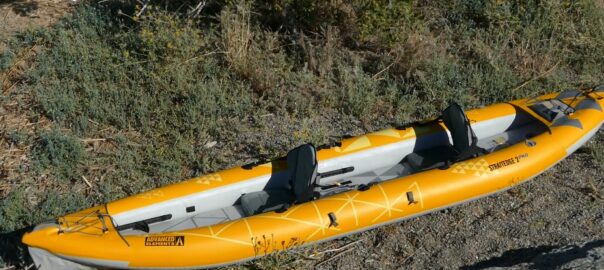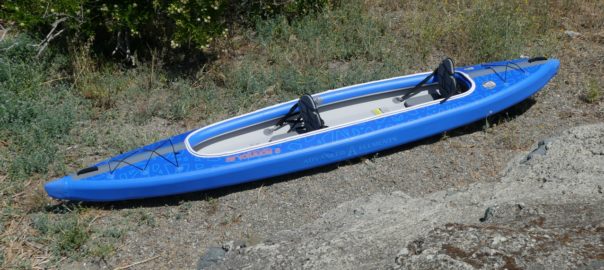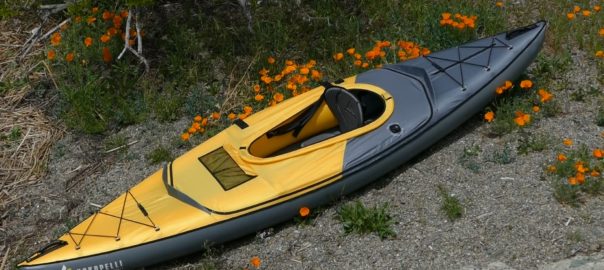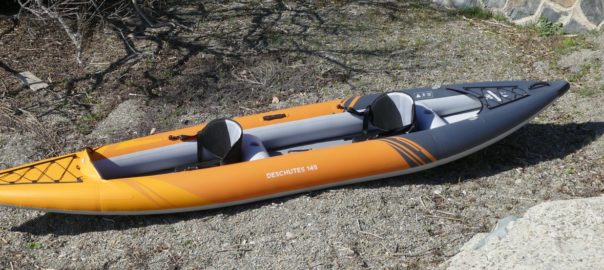Last year we posted our Sneak Preview on the new series of Moki inflatable kayaks from Kokopelli Packraft – two exciting new models introduced in 2020. What’s so special? The new Moki Series expanded the Kokopelli product line from just packrafts to inflatable kayaks, providing a traditional paddling experience.
In 2020, the Moki-Lites sold out before we could snag one, so one of our 2021 goals was to grab a Moki Lite for review. Misson accomplished, thus our current write-up on the Kokopelli Moki Lite, a lightweight 10’2″ model with open deck.
Getting Started with the Kokopelli Moki-Lite Inflatable Kayak
We unpacked the box and laid out the pieces – inflatable kayak body with high pressure floor, EVA seat, foot brace, pump with gauge, repair kit, mesh carrying case, fin, repair kit and instructions. AirKayaks note: This was a 2021 model that we received earlier this year. All current Moki Lites now include the Alpine 4pc fiberglass breakdown paddle with ivory blades. The photos below show the Advanced Elements Axis fiberglass paddle with orange blades.
Boxed up, the dimensions are 36 x 25 x 12 inches with a shipping weight of 44 lbs. The kayak weighs 25 lbs with the seat, floor, brace and fin. All packed up in the bag with pump and paddle, everything weighs 32 lbs. The folded kayak size is 30 x 19 x 6 inches.
The generic instructions for Kokopelli’s inflatable kayak series include inflation and deflation techniques, deck, seat and skirt installation, but lack details on actual set up; we will outline the steps we took, below. In general, set up is straight-forward – unpack, unfold, inflate.
The first step is to unfold the kayak.
The Kokopelli Moki-Lite utilizes three main GRI push-push valves for inflation. These are very simple to use and feature an inflate mode (spring plunger is UP) and a deflate mode (spring plunger is DOWN). By using your finger to gently push on the plunger, it can be moved to the inflate mode (air goes in and doesn’t come back out) and deflate mode (air goes in and comes back out). Before you go to all the effort of inflating the board, PLEASE make sure the plunger is in the inflate position.
Next, set up the pump – this is not mentioned in the instructions. The Moki-Lite comes with a very nifty, collapsible, dual-action Nano pump and built-in pressure gauge. Fold down the feet and attach the hose to the side that says Inflate (there is also a Deflate side). There are two pieces of plastic tubes in the plastic packaging – these are screw on handles. Unfortunately, there is no place to attach/store the handles when removed so you may want to buy a mesh laundry bag










You must be logged in to post a comment.